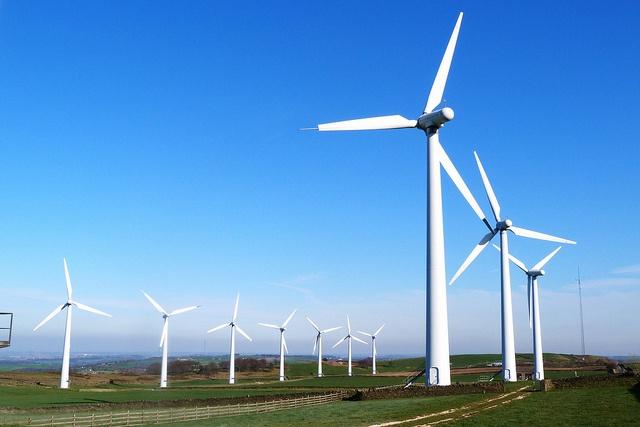
World leaders convened in Paris last week to agree on a successor to the Kyoto Protocol. The goal is to keep global temperature rise to 2 degrees Celsius, at maximum, with many stakeholders calling for an even stronger goal of 1.5 degrees. One way to achieve that goal is through the mass deployment of renewable energy.
A recent report by the International Renewable Energy Agency (IRENA) found that achieving a 36 percent share of renewable energy by 2030 would provide half of the greenhouse gas emissions reductions needed to stay within the 2-degrees threshold.
The U.S. has a chance to be a leader in renewable energy deployment given its sheer size and resources. And some states are leading the way. Olivet Nazarene University’s engineering department ranked the top 10 green states in terms of renewable energy.
How does your state stack up? Did it make the list? Read on to find out.
1. Maine
The state makes the top spot because it is able to produce more wind energy than all of New England combined. The state has over 200 turbines that are constructed and under contract, with a total investment in Maine-based projects of over $1 billion. In 2013, Maine’s wind turbines generated 431 megawatts (MW) of capacity, enough to power about 61,000 homes for a year.
Maine wind farms will reduce carbon emissions by 2.5 million tons in 2020, equal to removing pollution from 400,000 cars. That same year, the state’s wind power output is expected to reach 1,700 MW of capacity, enough to power 276,000 homes for a year.
2. Rhode Island
The growing solar sector in Rhode Island helps put it in the second spot. In 2013, its solar sector increased by 62 percent. The state is the second-lowest emitter of carbon among all states, and doesn’t have any coal-fired electricity generation.
Although less than 4 percent of Rhode Island’s net electricity generation comes from renewable energy, most of it from landfill gas, it is really growing. The state has a renewable energy standard (RES) requiring electricity providers to get 16 percent of power sold in the state from renewable sources by 2019.
3. Idaho
The northwestern state’s main renewable energy source is hydropower, but it has sufficient geothermal sources for electricity production. In 2014, a whopping 82 percent of Idaho’s net electricity generation came from renewable energy sources, and it has the fifth lowest average electricity prices in the U.S. Hydropower supplied 60 percent of net electricity generation in 2014, making Idaho the second largest hydropower user, after Washington state.4. Delaware
Although in 2014 Delaware generated 82 percent of its electricity from natural gas and 11 percent from coal, it has a renewable portfolio standard requiring electricity suppliers to generate 25 percent of electricity from renewable energy sources by 2026.5. Hawaii
Hawaii’s main source of renewable energy is biomass, followed by solar and wind. However, it has geothermal capacity. It is one of seven states with installed geothermal capacity, and in 2014, 19 percent of its renewable net electricity generation came from geothermal energy.
Its utility-scale electricity generation from solar energy more than doubled in 2014. It is also the first state to set a goal of producing 100 percent of its electricity from renewable energy sources, a goal it plans to reach by 2045.
6. Oregon
In 2014, 73 percent of the state’s generated electricity was from hydroelectric plants and other renewable sources. Its geothermal potential is ranked third in the U.S. after Nevada and California.
7. Nevada
Although 90 percent of the state’s energy is imported, it is ranked second in the U.S. for geothermal energy potential. It was ranked second in the U.S. in utility-scale net electricity generation from geothermal energy and third in utility-scale net generation from solar energy in 2014.
8. South Dakota
The state has vast wind power potential as 88 percent of its land area is suitable for the development of wind power. South Dakota had more net electricity generation from hydroelectric power than any other source in 2013.
9. Washington
The northwestern state is the nation’s hydroelectric leader, producing 30 percent of America’s hydropower. It is home to the Grand Coulee Dam on the Columbia River, the largest single producer of hydroelectric power in the country. In 2014, Washington ranked 10th in the U.S. in net generation of electricity from wind energy.
10. Iowa
In 2013, 27 percent of the state’s energy came from wind power, and it was ranked third in the production of non-hydroelectric renewable energy. Wind in 2013 was second to coal as a source for electricity generation. Iowa is second, after Texas, in electricity generation from wind turbines.
Image credit: Flickr/steve p2008

Gina-Marie is a freelance writer and journalist armed with a degree in journalism, and a passion for social justice, including the environment and sustainability. She writes for various websites, and has made the 75+ Environmentalists to Follow list by Mashable.com.














